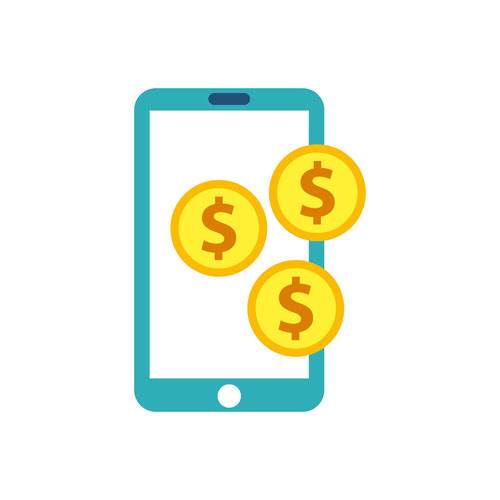Content
- Traditional Deployment vs Continuous Deployment
- Automic Continuous Delivery Automation Pros
- Find our Agile Scrum Master Online Classroom training classes in top cities:
- Advantages and disadvantages of continuous integration
- Microsoft Team Foundation Server
- Relationship to continuous deployment
- Featured Resources
- Trends to Look for in Business Agility
Separate code deployments from feature releases to accelerate development cycles and mitigate risks. The master branch, as a result, can become cluttered more easily as it serves as both a production and development branch. Since there is no development branch as you are testing and automating changes to one branch which allows for quick and continuous deployment. Perhaps the most obvious benefit of this model is that it allows for parallel development to protect the production code so the main branch remains stable for release while developers work on separate branches.
Therefore, nurses may lose time while dealing with someone else’s tasks. The third advantage of team nursing is the comprehensive nature of care and an integrated approach to decision-making. With traditional deployment, you typically get a large batch of changes deployed all at once.
CDS provides an intuitive UI that allows you to build complex workflows, run them and dig into the logs when needed. Cdsctl is the CDS Command Line – you can script everything with it, cdsctl also provide some cool commands such as cdsctl shell to browse your projects and workflows without the need to open a browser. But then again, a rapid and imposed shift to the Agile way of doing things may not drive immediate results. IaC documents the full topology of your infrastructure — from networks and VMs to load balancers — and incorporates all steps required to configure the right environment to run your applications. The last disadvantage of this model virtually extends the previous one as it revolves around patient-centered care. Join the Ship It Club to receive updates on development trends, productivity tips, and gain early access to DevCycle events and giveaways, shipped once a month.
- Magazine as one of the fastest growing private companies in the country.
- Continuous delivery allows developers and IT teams more flexibility when rolling out products and features to end-users.
- In classical software development, the end product is only delivered if it contains all the planned features, runs smoothly, and has no serious defects in the quality check.
- Requires good team coordination because code changes must be collected frequently and efficiently.
- Not only is it important that everyone involved has access to the source code, it must also be clear to see what changes have been made and by whom.
- Feature flags are a technique that will help you get new features out to customers without having to wait until the whole feature is finished.
- CircleCI is also a web-based application for continuous integration, delivery, and deployment.
Continuous delivery provides the developer with feedback through automated tests, which usually check the build after every change to the source code. Continuous delivery is an innovative concept in software development that is becoming increasingly popular. This has the advantage that you can subject software products to a quality check piece by piece and at short intervals and deliver them while you’re still working on the product. You receive constant feedback in the pipeline, allowing you to improve the software immediately after each change to the source code. Learn which code is production-ready and which release candidates are not ready to move to the delivery pipeline (e.g. due to integration issues).Acts as a safety net. Prevent subpar products from creeping into releases and undermining the user experience.
Traditional Deployment vs Continuous Deployment
New features and changes to the code automatically reach the end user. Software development is generally faster, because the largely automated release process relieves developers of the workload and reduces the number of breaks they have to take. GitFlow is great for open-source projects that require strict access control ci cd maturity model to changes. This is especially important as open-source projects allow anyone to contribute and so with Git Flow, you can check what is being introduced into the source code. This strategy is particularly suited for small teams and web applications and it is ideal when you need to maintain a single production version.
This allows your teams to rapidly test products, troubleshoot bugs and integration issues, and release fully functional software rather than half-baked code. Integration with CI is the only way to spot problems early on and resolve them before delivering features to customers. A feature flag system can help developers turn off any code that causes problems after being integrated.

Continuous delivery contrasts with continuous deployment , a similar approach in which software is also produced in short cycles but through automated deployments rather than manual ones. As such, continuous deployment can be viewed as a more complete form of automation than continuous delivery. Continuous testing is the process of introducing automated testing at different stages of the software development lifecycle to enhance end product quality. In other words, CT encourages you to test early, often, and fast. DevOps is a people, technology, and process equation aimed at finding the optimal cadence for managing, optimizing, and expanding software development capabilities in the context of overall IT services delivery.
Companies need to be certain there’s no need for product alteration if they operate 24/7. Once a system is up and running, not much needs to be done aside from general supervision of the machinery. This can help companies save on expensive labor costs and focus investments on innovative technology or production expansion. But the product can be delivered much earlier and subjected to “real” tests.
Automic Continuous Delivery Automation Pros
Continuous delivery is the ability to deliver software that can be deployed at any time through manual releases; this is in contrast to continuous deployment which uses automated deployments. According to Martin Fowler, continuous deployment requires continuous delivery. Academic https://globalcloudteam.com/ literature differentiates between the two approaches according to deployment method; manual vs. automated. A branching strategy, therefore, is the strategy that software development teams adopt when writing, merging and deploying code when using a version control system.
Part 2: Building a Python ecosystem for efficient and reliable development – Coinbase
Part 2: Building a Python ecosystem for efficient and reliable development.
Posted: Thu, 27 Oct 2022 13:40:59 GMT [source]
What’s more important, continuous integration makes continuous delivery possible. CD is a set of practices that speed up the software lifecycle. In other words, CD allows product releases to happen more frequently.
Developers often use version control to commit to a shared repository before making changes. One way they do this is by working with Git, which is a type of software that allows people to commit their code. Before each commit, developers may choose to run tests on their code. A continuous integration service automatically builds and runs tests on the new code changes to find any errors as soon as possible. Choosing the right development model is essential for successful software programming. This makes it possible to minimize development costs in the long term by using an approach that fits your requirements.
Find our Agile Scrum Master Online Classroom training classes in top cities:
Only if no changes occur – which can happen if they have not updated their working copy correctly – the process is actually completed and the developer can focus on the next task. While Waterfall still exists, its use has been on the decline for about a decade. News paradigms and technologies around the cloud and mobility require more flexible and rapid models for software development. Honestly, businesses that don’t adopt the latest Agile models, including DevOps, in today’s hypercompetitive world, aren’t going to succeed. The rise of the Web and the demand for faster software releases drove the evolution of Agile. It enables you to deliver solutions quickly to your audience.

In this article, we provide an overview of some of the most popular and best continuous… CircleCI is also a web-based application for continuous integration, delivery, and deployment. CircleCI works preferably with GitHub, GitHub Enterprise, and Bitbucket. CircleCI received the “Leader in Continuous Integration” award from Forrester in 2017. The first container is free of charge, the second one is $50 per container per month.
Advantages and disadvantages of continuous integration
Engaging experts as you develop — and possibly implement — your strategy. So, the IT team is free to focus on the work that delivers business value. Deploy software applications into production as needed to meet real-time requirements and dependencies. It can be developed continuously because the release process is also largely automated. The development itself is more efficient, but is paused more often by manual releases. The customer must show willingness to use software that is still in development.

Errors in your code may also not be evident immediately, so if something isn’t working you can simply disable the feature for your users then re-enable it once the problem has been solved. It also executes unit tests and other tests, such as integration and system tests. These test results provide feedback to developers that their code changes didn’t break any existing code. While they are making their changes, their colleagues have probably also made changes, so each developer on the team now has a different version on their workstation. The version on the mainline might have changed in the meantime, so the developer has to insert all changes into their working copy first. Only then can the programmer add their changes to the mainline.
Microsoft Team Foundation Server
With traditional deployments, your code gets deployed to production at set intervals, such as once per week or once per month. Companies like Facebook use continuous deployment extensively, because they make major changes several times a day, with small patches throughout each day. They do a rollback to ensure no regressions are introduced but rely on automated checks to do so. Here’s what you need to know about continuous delivery and deployment, the differences between them, and how to pick the right model. In the past, developers worked in isolation for a long time before merging their changes back to the master branch. Despite its positive characteristics, continuous integration is often also shown to have some disadvantages in everyday working life.

New features, improvements, and changes to the product are still delivered manually. To automate this process, you need to move to continuous deployment. The continuous delivery pipeline makes it much easier for developers to troubleshoot problems.
Relationship to continuous deployment
Continuous delivery automates the process cycle from development, quality management, and production. Continuous delivery describes a reciprocal process that combines and automates development, delivery, feedback, and quality management. Several strategies to overcome continuous delivery adoption challenges have been reported. To practice continuous delivery effectively, software applications have to meet a set of architecturally significant requirements such as deployability, modifiability, and testability.
Software errors can be found and eliminated much more efficiently in the development process. Rowan is part of the content marketing team at Flagship by AB Tasty. She’s interested in all things marketing, particularly digital marketing.
Without CD, developers manually develop, test, and deploy code. The developers can fully concentrate on the actual development. Visibility – All aspects of the delivery system including building, deploying, testing, and releasing are visible to every member of the team to promote collaboration.
Trends to Look for in Business Agility
One of the most important things when it comes to continuous integration is that a faulty version must never remain on the mainline. For developers, this means that the repair must not be postponed. According to Martin Fowler, it isn’t a problem if builds don’t work and the code needs to be reworked, but the continuous integration system always requires the repair to be done immediately. This is because all developers must be able to assume that the code works in the mainline – if it doesn’t, the whole team builds in unstable systems, causing an avalanche of bugs. Continuous integration can only work if all team members are supporting the system. As soon as one developer fails to permanently integrate their code into the mainline, other developers assume false premises.









